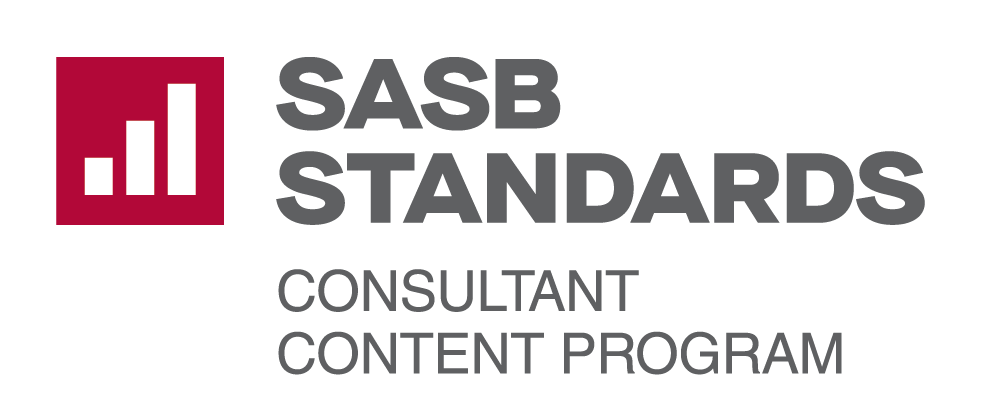CEO, Alex Lassiter, recently spoke with Eric Corey Freed who is an award-winning architect, author, and global speaker and had the opportunity to ask him a few questions about why he is so passionate about sustainability.
AL: To start off, can you tell me a little about yourself and what you do?
ECF: Well, I’m an architect, I design buildings. The only real difference is that the buildings we design take responsibility for themselves in terms of their carbon, their waste, their energy, their water, and their material use.
AL: Can you talk a little bit more about what it means to design a building with sustainability in mind?
ECF: It turns out that buildings are the worst offenders of the environment. Essentially more than half of the world’s carbon comes from the design, construction, and operation of buildings. As humans, we spend roughly 90% of our time indoors, and 72% of the world’s electricity goes to buildings. In terms of their environmental footprint, buildings are really bad, so by paying attention to these things we can greatly reduce their impact. At the same time, we’re also making a better building. For example, we can build a building that produces its own energy, processes its own waste, and doesn’t use carcinogens, and we can do this without needing any new inventions. The question that always lingers in my mind is, if we have the ability to make a sustainable building, why don’t we, especially knowing what we do now? I can forgive my great grandparents’ generation, because they didn’t know any better, but we do, and yet we still design these awful things. That’s what it means to build a sustainable building.
AL: So, why isn’t everyone solely building sustainable buildings?
ECF: Well, the first obstacle is tradition; we’ve always built this way. This is what we are used to. The second is fear. We’re wired to fear things that we don’t know or understand. Our initial reaction is to just reject it immediately. We’re not wired to innovate. We’re not wired to seek out the best solution. We’re wired to make ourselves comfortable. The third obstacle is ignorance, just a general lack of knowledge about these methods. They know there is a better way, but what’s one more building that’s toxic or wasteful; what’s the big deal?! There’s no connection with one building and how it will affect the bigger picture. You know, perhaps the biggest problem with climate change is not that people don’t understand it, but rather that people feel climate change is such an insurmountably large problem that we don’t see how we can play a role in solving it. It’s so big that it has become an out of context problem. Maybe once people start to understand that, then they can start to realize that every snowflake in the avalanche pleads not guilty, but every snowflake can contribute to the avalanche.
AL: What needs to happen in order for sustainable building to be adopted on a wide scale level? Is it a design challenge, or a financing challenge, or construction challenge? Who or what can fix this issue?
ECF: It’s all three of the issues you mentioned, plus it’s a regulatory challenge. Right now you basically have four different buckets, and we need all four to up their game. That’s why we’ve seen such a movement in design towards sustainability in construction in terms of materiality, products, supply chain, incentives, and building codes. On the financial side, we are seeing new models to help pay for all of this. For example, I am now able to put solar panels on all of our new projects for free, the buildings have to simply agree to buy the power.
AL: If making a more sustainable business can be cost efficient, why are more people not doing it? Is it a lack of education, or do you think people find it too complicated? It seems like the financial incentive would be enough to entice more builders to adopt sustainable practices.
ECF: Yeah it’s both of those reasons. There’s nothing wrong with it being a financial decision. I think a lot of the history of the environmental movement was wishing that property owners would want to do it for the right reasons. But, being sustainable should also mean that it’s economically sustainable. Being able to make money while also doing what is right is great, let’s get more of that! There’s a quote I think about often from t.s. eliot that says, “The worst treason is to do the right thing for the wrong reason.” I struggled with that for a long time and wanting people to embrace sustainability for the “right” reasons, but I think I’m over it simply due to the urgency of climate change. The need to cut our carbon emissions to zero is so strong, I don’t care. I don’t care about their reasoning, as long as they are doing something to eliminate their emissions. That’s where my mindset is right now. As long as it’s not greenwashing I’m all for it!
I think a prime example of how financial gain can be used as an incentive would be Exxon, which is the largest polluter on our planet. They were sued by their own shareholders for failing to disclose how climate change is a risk to their investment. They’re not doing it for the world, they’re doing it to project their investment. Exxon, who basically invented the climate change denial PR machine, fought the lawsuit and lost. At the same time, the head of the SEC recently announced that every publicly traded company will be required to publish their climate risk disclosures by the end of this year. So we are going to start seeing things move quickly, especially when you look at things like BlackRock investments and see that you can do good while doing well at the same time. The six largest insurance companies in the world are basically forcing their clients to divest in fossil fuels or be declared uninsurable. There have been some really big movements in the financial services industry that have pressured other industries to play catch up and respond to these external forces.
AL: When you are designing a building and trying to determine what can make the design better, what are the top three things you look to do? What are the things you tell people are no brainers that they need to be doing?
ECF: First, I look at everything through the five main buckets:
- Operational Energy (how much energy will it use?)
- Embodied Energy (how much energy went into constructing the building and materials?)
- Healthy Materials (how can we avoid harmful chemicals?)
- Resiliency (how can we adapt to a warmer, wetter world?)
- Zero Waste (how can we design out waste?)
Ideally, you’d want the building to generate as much energy as it consumes (operational energy). The embodied energy is responsible for about half of the carbon emitted during the life of the building. So we end up looking at the structure, the frame, the envelope, and how much carbon was admitted for all the materials that go into that building.
In terms of health, buildings are shockingly toxic in some of its most commonplace materials. So we explore how to avoid all known cancer-causing chemicals inside the building. In terms of resiliency, we are designing both for today and for the changes the 2050 will bring.
Lastly, a zero waste strategy allows us to explore how to save our clients money and rethink their operations. All five of these are important, but the urgency of climate change really puts carbon reduction at the forefront.
In terms of no-brainers, orienting the building to the Sun knowing it will rise in the east and set in the west and make the south side hot goes a long way to designing an efficient building. It’s also a no brainer to design the building to incorporate daylighting and healthy materials.
AL: So it can’t possibly be a knowledge thing, right? Everyone has to know that this is an issue, or do they not? Do builders know about these issues and choose to ignore them?
ECF: Think of all the paints, caulking, sealants, adhesives, and all that liquidy gooey stuff in a building: all of those chemicals contain volatile organic compounds, or VOCs. Those VOCs are known carcinogens. What makes it worse is that they have zero VOC versions of all those products available. While 15 years ago they were difficult to find, today they are pretty ubiquitous. Every major manufacturer offers a zero VOC version of their products. The problem is when contractors say things like, “oh those zero VOC versions don’t work as well.” My response is always, “how do you know that since you’ve never painted with them?” So they really don’t know what they are talking about!
AL: I know LEED certified buildings are huge in North Carolina, I’ve had many clients talk about groups such as Bank of America only buying LEED certified buildings. Do you think a similar incentive program could be implemented to stop the use of VOCs?
ECF: LEED is great for creating a baseline standard for what a green building should look like for hundreds of jurisdictions across the country. But you did have industry pushback, building owners and contractors not wanting to spend any more time or money than they had to. In fact, South Carolina proposed a bill a while ago that would have made solar panels illegal. Obviously that didn’t pass, but the fact that they tried it is shocking. It really shows the kind of mindset we are still dealing with here.
California has pledged to become carbon neutral by 2045 and they’re on track to do it. They’ve also had an energy code in place since 1978, called Title 24. That basically ensures that the per capita energy use of every California remains constant and has since 1978, because it sets minimum energy standards for every single building. Essentially every building in California is a green building. We’re seeing similar efforts in New York and Texas.
Texas has the ability to reignite their entire economy by wind farming, because they can produce 100% of the country’s energy needs within the panhandle of Texas.
I know that California has the 6th largest economy in the world. It seems like some of these states are hesitant to adopt their practices because they fear it will be so expensive, so where’s the disconnect? How can their economy be thriving if others say their policies cost too much money? It is more, hey these guys have contracts already, they want to keep them and have the power within government to do so? What sort of drive was sent to that?
We have to break out of this mindset they doing the right thing somehow cost more money when in fact it will save us money in the long run. We have so many problems right now that could be addressed and possibly even fixed through the use of more sustainable business practices. Imagine striving to improve the quality of life of everyone! So we need to stop thinking so we linearly about all of these issues and instead take a holistic and lifecycle approach to cost.
I’ll give you an example. The way we traditionally heat and cool buildings is to consume a lot of the energy to increase or decrease the temperature of the air and then blow it around the inside of the building. It’s called a “forced air” system and it’s incredibly inefficient. But since it’s been around forever, we mostly do it out of habit. Most of that conditioned air will leak out of the windows and go to waste.
Alternatively, we have another system called a “chilled beam” system, using cool water to loop and maintain a regular temperature within the building. Not only is it incredibly efficient but it also reduces dust, reduces noise, and improve air quality. While it may cost a little more upfront, it usually pays for itself in a few years. If you’re running a hospital, the forced air system just no longer makes sense.
AL: I guess my last question for you would be, what would you want people to take away from this? What should a business owner take from this?
ECF: You’ve all heard before that each of us can make a difference. Rather than feeling guilty about your personal carbon footprint, or the fact you had a cheeseburger last week, I’d much rather you focus on the larger institutional changes that we could all help bring about.
Making people feel guilty about their individual actions will not inspire widespread positive change. Instead, we really need to ask our legislators and regulators to take bold steps to ensure a green future for everyone. Vote with your dollars and support companies that are making these positive changes (conversely, do not support companies that don’t!).
I’m not saying that everyone should go out today and buy an electric car. We won’t be able to buy or recycle our way to a greener future. Instead, I’m asking all of you to think about the choices that we make and demand more from the companies that we patronize. Make more informed decisions and demand more of the companies you follow.










